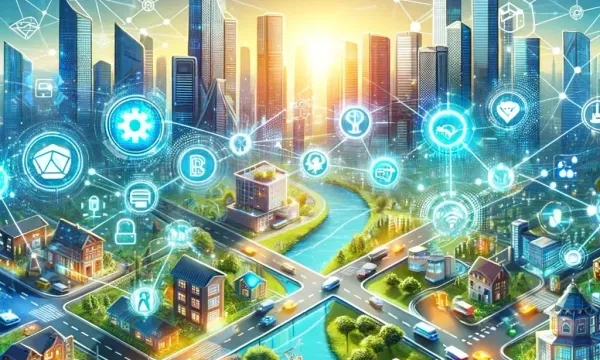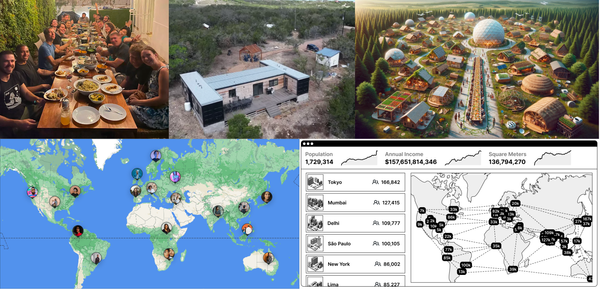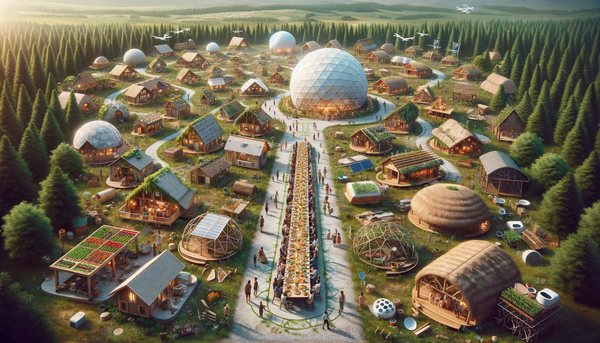Six economies of online creators
Kevin Kelly described one of the first paths to becoming an independent creator employed by the internet in his classic essay 1,000 True Fans:
To be a successful creator you don’t need millions. You don’t need millions of dollars or millions of customers, millions of clients or millions of fans. To make a living as a craftsperson, photographer, musician, designer, author, animator, app maker, entrepreneur, or inventor you need only thousands of true fans.
I believe Kelly's prediction of an internet of indie creators, now 12 years old, is just hitting its stride. It's one of those cases where enough positive forces combine simultaneously to create something extraordinary:
- Widely available open-source software, scalable infrastructure, app and web frameworks, and full stack micro-SaaS for operating a business — what Tyler Tringas calls "the Peace Dividend of the SaaS Wars"
- An unbundling of online social spaces and a retreat to the cozy web, which has resulted in a blossoming of niche creative communities
- Acceleration of stronger cultural norms of online interaction developed during the pandemic (if you'll attend a Zoom wedding, why not a Zoom class?)
- Declining transaction costs driving a macro-economic trend towards remote and gig work
- Tech giants getting too big and too focused on regulation to focus on solving niche problems
So what happens when you smash all of these trends into each other? You end up with a lot of different ways to make a little money.
If your independent financial goal is to make $100k per year, finding 1,000 True Fans is one path. But as Li Jin has been pointing out this year, 100 True Fans might be a better fit for many creators in the passion economy.
Both of these paths are on a wide spectrum of such economies. Before you decide how many fans you need or what to produce for them, it's worth taking a step back and looking at the full range of ways to make $100k in annual revenue. It spans six orders of magnitude, each of which represents a distinct economy of creators:
- 100k @ $1 / yr — Influencer economy: ads, micropayments, affiliates
- 10k @ $10 / yr — Gig economy: e-books, drop shipping, transactional gigs
- 1k @ $100 / yr — Fan economy: patrons, subscription newsletters/content
- 100 @ $1k / yr — Passion economy: Online courses, coaching/tutoring
- 10 @ $10k / yr — Indie economy: Indie consulting, niche SaaS
- 1 @ $100k /yr — Professional economy: aka jobs, what the rest of us are avoiding 😁
Understanding these economies can be useful for thinking about the right business model for your work. You can start with the size of customer base you want to work for and then back into the type of product those customers would buy from you. Or, you can start with the product you make or want to make and figure out how many customers you would need to make it work.
On one end of the spectrum, you have influencers. Influencers are people who build very large audiences and offer them free content. They usually monetize indirectly by selling their audience (ads, affiliates, etc). Over the past decade, micropayments have also finally started realizing their long-heralded potential via platforms like Twitch. I'm still hopeful for future forms of micro-payments designed more broadly around decentralized online communities.
One order of magnitude away is the gig economy. Gigs are the hustle and grind of the independent world. This economy is best known for its highly structured vertical marketplaces like Uber, Instacart, and Thumbtack, as well as its broad open-ended freelance platforms like Fiverr and Upwork. But the gig economy also includes a wider range of less well known independent workers churning out tasks for around $10 in revenue. An example is the drop-shipping community, one of those fascinating little corners of the internet to poke around in.
The one-thousand true fan economy is having a renaissance. In the wake of massive layoffs and downsizing at newspaper and magazine companies trying to compete on the internet, independent writers and journalists are trying to find new business models. Many have built a decently portable fan base over the years, and the best are monetizing subscription newsletters and other content. Suddenly everyone has a newsletter, because newsletter subscribers are fans. Fan-based crowdfunding platforms like Patreon and Indiegogo have also established themselves as mainstream and companies like GitHub are trying this model out in new verticals. And, of course, there's OnlyFans.
We are just starting to see the early signs of successful passion economy companies and communities. The best examples are online classes—spanning from live, remote yoga and weight training sessions to full blown courses like Write of Passage and Building a Second Brain. Passion tends to lead to education and social connection, so it's unsurprising that organizations operating in this zone usually become both classes and communities. Interestingly, 100 true fans is about where Dunbar's number pegs the best size for a tribe.
Discovering the indie economy feels kind of like the first time you travel to a popular international backpacker destination and find your way to a hostel. There's a whole world of recovering former professionals company-hopping through consulting gigs the way travelers country-hop through bars, beaches, and remote mountain retreats (the only two times I've met yak herders are at an alpine lake in Nepal and in the thriving indie consulting community). Beyond consulting, the indie economy thrives on micro-SaaS products. It turns out you can make good money selling appointment reminder software to SMBs for $100/month.
Finally, we have Professionals. People with jobs. Instead of selling a product, they sell themselves to work on someone else's product. Interestingly, the spectrum sort of wraps back around to the other end—Influencers and Professionals are the two groups who don't directly build and sell products to users. It turns out the classic meme that "if you're not paying, you're the product" works as well for producers as consumers—if you're not selling a product, you're it!
I don't mean to demean professional work. I did it for awhile and often found it to be incredibly fulfilling. The point is just that everyone should find their own spot on the map. Jobs are and will continue to be the right path for many people. Gigs will become a dominant form of work in a world of low transaction costs. The fan, passion, and indie economies are having a virtual love fest right now. And micro-celebrity influencers don't appear to going anywhere.
I believe all of these economies are still in their infancy, and will become increasingly dominant ways to earn a living over time. If you're interested in leaving the professional class and diving into one of these other economies, I started a Creator Fellowship to help support you. My business model is essentially an iterator for the indie economy. If I can invest in 10 people a year and help them make their $100k online, I can recoup my initial investment plus earn around $10k per person.
And if you're interested in joining a community of people who quit their full-time jobs to build things online, reach out. The Creator Coop is a free, decentralized organization for maintaining mutual accountability to our goals and helping each other succeed. We have a community forum, regular virtual meetings, and anything else the community decides to make.




